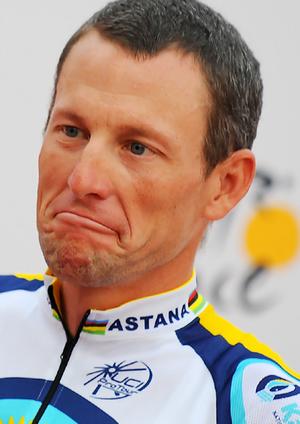Anyone who knows of courage and perseverance might question if the ends truly justify the means. For many following sports media, morality is back in question. The United States’ Anti-Doping Agency (USADA) disgraced the integrity of cyclist Lance Armstrong and his worldwide organization last month. Upon ‘doping’ allegations from his teammates and agents, the agency demanded that he be stripped of his seven Tour de France titles and banned from cycling for life. Until now, the record holder had symbolized hope for cancer patients and athletes alike.
Armstrong’s response to the USADA surfaced late Aug. 24, where the Livestrong foundation leader refused to cooperate with the USADA investigations involving unlawful ‘doping’ allegations. The USADA interpreted his refusal to cooperate as a sign of guilt. Armstrong’s supporters flooded the Livestrong Cancer Foundation with donations in a swift rebuttal. While his guilt remains undecided by the public, the investigations have certainly fueled attention to recently overlooked substance abuse in athletics.
As another year begins in high school, student-athletes return to a daily-dose of peer pressure to maintain a certain physique or make their hometown proud by winning that big game. Beyond these pressures, college scholarships rest on whether athletes have developed in the offseason. Even more overwhelming are academics and extracurriculars. Senior Chris Buckell predicts high school steroid use will get worse as student-athletes aim to get “better, bigger, stronger as new kids come in who are faster and bigger.” Suddenly performance enhancers can seem like a solution for that stress.
While adolescent steroid use hasn’t made major news lately, are the steroids themselves truly falling out of use? The Massachusetts Interscholastic Athletic Association (MIAA) finds it necessary to include anabolic steroids within the illegal drug section of their handbook. According to the MIAA, “A recent study indicates that more than 4 percent of Massachusetts high school students have used steroids without a doctor’s prescription. Of those, 27 percent have used steroids 1—2 times, and 41 percent have used them more than 10 times. About two-thirds of these students tried steroids before the age of 16.”
The association’s clear stance is also stated in its handbook: “The issue goes beyond protecting the integrity of your sport. The use of steroids is considered to be cheating. The MIAA is opposed to the use of steroids by athletes and all members of the student body because of health and ethical concerns.” (For more information see http://www.miaa.net/gen/miaa_generated_bin/documents/basic_module/MIAA Handbook 1113.pdf).
The MIAA’s rules against anabolic steroids (that are not prescribed by a doctor)ensure that users are suspended from games or entire seasons, leaving further punishment in the hands of high school administrations. The Scituate High School handbook includes expulsion and fines for possession or use of controlled substances (See SHS Handbook pages 90-91). If the fear of punishment or health issues aren’t enough, let Armstrong’s situation keep student-athletes in check.
Scituate High School students agree. Juniors Emma Hargrove and Meghan James called the news on Armstong “sad and pathetic.”
Senior Charles Ahl said, “I believe [steroid use] is not going to get any worse because of the repercussions. That will level the playing field. Since Armstrong, it’s going to slow down.”
Students of Scituate High School can testify that the abuse of alcohol, tobacco products, and various hallucinogens are more of a focus in Health class than steroids. The South Shores’ student-athletes can find ways to justify the use of performance-enhancing drugs. However, even the world’s most famous cyclist can confirm that the possession and use of illegal drugs can hold a hidden consequence: being labeled a cheater.
